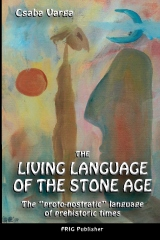|
I. Axiom: Every word
is an invention, a spiritual product.
II. Axiom: The same
vocabulary can’t be formed twice during history. One can’t
step twice in the same river.
III. Axiom: It is a basic
mathematical statement:
If a = b =
c is true
than
a = c must be true
IV. Axiom: One can’t
reconstruct the forgotten words from a defective Vocabulary.
There is no turning back in
the history of languages.
V. Axiom: Two word-roots
with identical meaning and sounding are
really one and the same word-root.
Explaining with other words:
Two words with identical pictures as described by their word-roots
are
the pronunciation-variants of one and the same root.
At the dawn of
humanity, everything was named by its spectacle.
Every
word-root was the name of a spectacle.
The sense-giving picture of
a word-root does not change by varying
the pronunciation of its
name.
Most word-roots have been used
with diverse pronunciations at different areas of the same language
territory. Those variations multiplied further by using different
languages like (Hu) KÖR (circle), (Eng) CHURCH or
(Ger) KIRCHE. The meaning of them can vary as well. Examples: the root of the words Kirche,
church, circular, kör <koer> (circle),
kert (garden), keret (frame), Slav gorod or
after metathesis grad and köröz <koeroez> (cruising)
means a circular built or encircled, enclosed
territory and a circular, not strait movement. (In the case
of church, the archaic places of worship were round, as Stonehenge
and many early Christian churches.)
The basic idea of all is
kör <koer> (circle) – more accurately – the imaginary
picture of a circle, being kerek (round) – or moving
not strait. The group of kör is just one of many
word-clusters.
This kind of word-building
principle is an inheritance of our
early common ancestors.
VI. Axiom: Everything
was developed out of the simplest condition.
VII. Axiom: The
unproductiveness of archeological and other investigations, to learn
about our past history,
can prove nothing.
(We can’t project the
results of our actual fruitless observations
upon our past.)
VIII. Axiom: Humans being
able to communicate in written form, are certainly
familiar with numbers and
write numerals as well.
IX. Axiom: If a rule
works than it exists.
(In other words: if a law
successfully performs in a system,
we cannot have doubt in the
reality of this system.)

The
Living Language
of the Stone Age
Anima Könyv:
The Living Language of the Stone Age
(Eurasia’s Nostratic Language)
by Csaba Varga 2003 / 2009
|